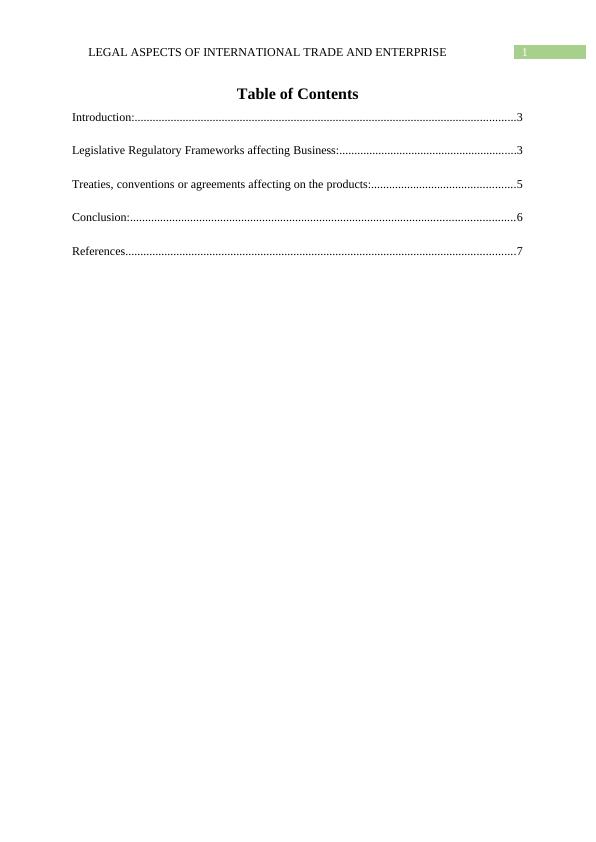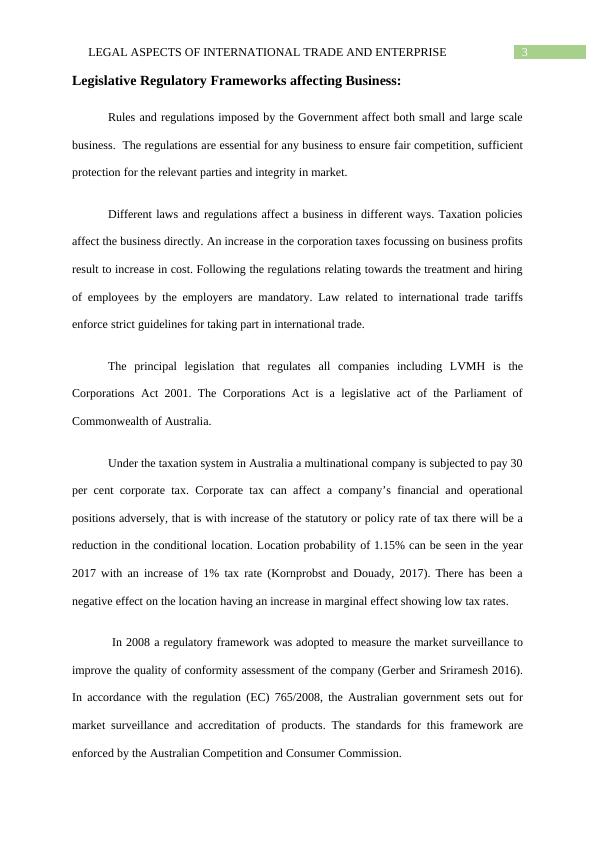Legal Aspects of International Trade and Enterprise
11 Pages2559 Words39 Views
Added on 2023-01-04
About This Document
This report explores the legal aspects of international trade and enterprise, focusing on the multinational company LVMH SA. It discusses legislative regulatory frameworks affecting business, treaties and agreements affecting products, and the impact of political regulations on the market environment. The report also highlights the importance of taxation policies, market surveillance, and intellectual property laws in the context of international trade.
Legal Aspects of International Trade and Enterprise
Added on 2023-01-04
ShareRelated Documents
End of preview
Want to access all the pages? Upload your documents or become a member.
Legal Framework and International Conventions affecting LVHMSA
|13
|3073
|30
Strategic Management Assignment - LVMH
|10
|3120
|483
COMPETITIVE STRATEGY OF LOUIS VUITTON
|11
|2703
|59
Operation and Project Management in Organisation : Assignment
|11
|2620
|63
Business Organisations and Environments on Dior Assignment
|12
|3294
|623
Strategic Analysis of LVMH: Opportunities, Threats, and Internal Analysis
|13
|3818
|56




